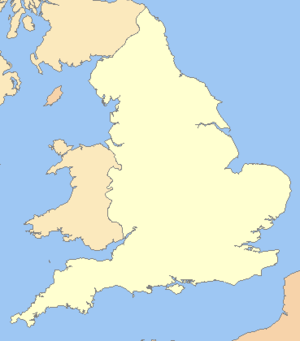This article needs additional citations for verification. (December 2020) |
| Siege of the Tower of London (1460) | |||||||
|---|---|---|---|---|---|---|---|
| Part of the Wars of the Roses | |||||||
 | |||||||
| |||||||
| Belligerents | |||||||
|
|
| ||||||
| Commanders and leaders | |||||||
 – Siege of the Tower of London;
– Siege of the Tower of London;  – other battles;
– other battles;  – other places
– other places
The siege of the Tower of London was an episode of the Wars of the Roses, in which adherents of the rival Plantagenet houses of Lancaster and York were pitted against each other. In June 1460, several Yorkist nobles, who had unsuccessfully rebelled against King Henry VI the year before and had fled to Calais, invaded the south east of England at Sandwich. They enjoyed widespread support through popular discontent with the ruling court among the populace of Kent and the merchants of London, and were greeted by enthusiastic crowds when they entered London on 2 July.
The Lancastrian garrison of the Tower of London, commanded by Lord Scales, opened fire indiscriminately into the surrounding streets with cannon and wildfire, causing many deaths and injuries. While most of the Yorkist army marched north into the Midlands to engage the King's Lancastrian army, 2000 men were left under the Earl of Salisbury to besiege the Tower. They were aided by many of the city's aldermen and armed militia, who used bombards secured from a royal depot to demolish part of the Tower's curtain wall, and blockaded the Tower to prevent supplies reaching the garrison.
On 10 July, the Yorkists won the Battle of Northampton and captured King Henry, who they treated respectfully for the time being. On 19 July, the garrison of the Tower were starved into surrender. Scales attempted to escape in disguise by boat, but was recognised and butchered by a mob.
